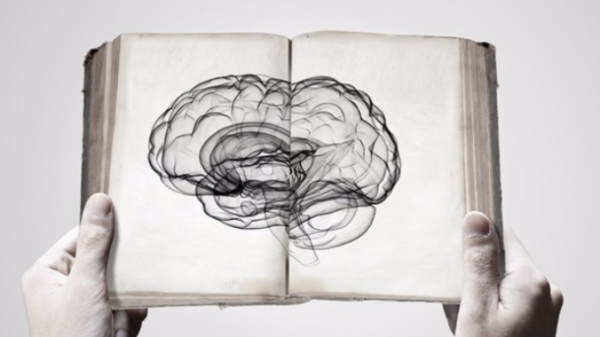
Scientists are studying the brain for over 100 years, but until now it remains the biggest mystery to man. How does the brain work? On this issue today will not answer no neuroscientist. We are only able to understand some phenomena that occur in the neural networks of the brain and how they affect our state. About how human emotions are formed, and what are the areas of the brain are born of feelings, writes likar.info.
A few words about emotions
Emotions are one of the manifestations of man’s relationship to himself and the surrounding reality. Today, scientists know a lot about the formation of emotions and the mechanisms of their occurrence, allowing you to manage them. Thus, a competent psychologist can work with human emotions, giving him the ability to cope with the negative manifestations, in particular, to overcome the fear, anger, and other conditions that impede a person to enjoy life.
There are many words that explain certain emotional hues – joy, sorrow, compassion, fear, anger, jealousy, pity, indifference, love and many others. If we consider emotion from a purely physiological point of view, it is a reaction of the organism to the effects of certain internal and external stimuli. Such reactions are highly subjective and typically cover all types of sensitivity.
You need to understand that emotions manifest not only in certain subjective experiences, but are objective manifestations. For example, when varying emotions a person commits certain acts, he is expressed and manifest facial expressions to specific emotions autonomic reaction.
Guilt and shame – temporal lobe
We are fairly easy to understand how the brain operates with memory and thought process. But what about feelings? We are so accustomed to phrases like “break your heart”, if we are talking about sadness, or “flushed,” when we describe the shame. In this sense, it is rather difficult to accept the fact that emotions and feelings as well as thought process and memory, are formed in the brain. And yet, it is. Emotions – neurophysiological process occurring in the tissues of the brain. Today, thanks to neuroimaging technology, scientists can estimate the process.
A group of scientists from the Ludwig Maximilian University (Munich) under the leadership of Petra, Michal held a series of interesting studies by identifying areas of the brain responsible for feelings of guilt and shame. After many MRI images of the brain scientists have found that anatomically these two emotions coexist.
The experimenters asked study participants to imagine that they feel strong guilt or shame, and in both cases, these emotions are activated the temporal lobe of the brain. It should be noted that the shame involved in them, anterior cingulate cortex, which is responsible for communication with the external environment and informs the person about the errors and parahippocampal gyrus, which is responsible for the memorization of scenes and memories from the past. As for guilt, that she, in turn, activated the lateral occipital-temporal gyrus and middle temporal gyrus. It is the center of the vestibular analyzer.
In addition, you have shamed people have begun to be activated by the fore and middle frontal gyrus, and those who felt guilty also activated the amygdala and insular lobe. With regard to the latter two areas of the brain, they are included in the limbic system, which governs our basic emotions, for example, fight or flight, as well as the internal organs, blood pressure and other processes and reactions.
When comparing MRI images of the brains of people of different gender, the scientists discovered a curious fact. So, in women, for example, the fault affected only the temporal lobe, and men also started to work and frontal lobe, occipital lobe and the amygdala. This is one of the most ancient elements of the brain that are responsible for the feeling of fear, panic, anger and pleasure.
Feelings of anger and fear – the amygdala
The limbic system of the brain responsible for feelings, actions and reactions necessary for the survival of the species. The limbic system is formed during fetal development. The most important element of this system are the amygdala – a structure, located near the hypothalamus. Tonsils aktiviziruyutsya, when man sees food, a sexual partner, crying children, rivals and so on. Reaction to the source of fear – the amygdala is also the work phone for Example, if you return home and on the road you think someone is following you, it is also the job of the tonsils. In several independent studies that were conducted in various centres and universities, professionals found out that even artificial stimulation of these areas causes a sense of impending imminent danger.
As for the anger, as it turned out, it also occurs thanks to the activity of almond-shaped bodies. In this case, scientists found out that in physiological parameters anger differs from fear, sorrow and other unfavorable emotions. Paradoxically, but in this sense human anger was surprisingly similar to happiness. So, anger pushes us to move forward, as joy and pleasure, while fear and sorrow force the man to look away. In a state of anger, fury and rage in the brain are activated by a variety of areas, carrying this emotion to the brain must assess the situation, and also refer to memory, to experience, to normalize the production of necessary hormones and spend a lot of other work in order to fully prepare the body to this feeling.
The feeling of joy and laughter – the prefrontal cortex and hippocampus
In the moments when we experience joy, happiness, laugh and smile, in the brain aktiviziruyutsya a large number of different sites. It also activated the amygdala and the prefrontal cortex, the hippocampus and the cortex of the anterior insular lobe of the brain. Thus, joy, as well as anger and fear, cover almost the whole brain.
Scientists found that in the moment of joy in humans, the right amygdala becomes more active a little bit left. A fairly common view that the left hemisphere of the brain is responsible for logical processes and the right for creativity. Today, however, scientists know that it is not, because for most of the functions of the brain, in fact, need both parts, despite the fact that the asymmetry of the hemispheres do exist. For example, major speech centers are on the left side, and the area that is responsible for the processing of intonation – is located on the right side.
With the limbic system of the brain is closely linked prefrontal cortex. The latter is a few areas of the frontal lobes located in the anterior parts of the cerebrum, directly behind the frontal bone. The prefrontal cortex is responsible for our ability to define goals and set plans to achieve results, but also to change direction and even to improvise. Studies show that women in the moments of happiness the prefrontal cortex of the left hemisphere a little more active than the right.
Hippocampus – another anatomical structure of the brain, which helps people separate important emotional events from the unimportant. Thus, strong emotions in the person retains memory for a long time, and of minor, quickly forgotten. That is, the hippocampus evaluates the importance of a happy feeling to place it in the archive memory. It is reached including at the expense of the activity of the anterior insular lobe of the brain, which is also linked to the limbic system. It is established that islet share large brain most actively behaves when the person is experiencing a pleasant or sad feelings.
A feeling of tenderness somatosensory cortex
As multiple studies have shown that loneliness is not only on psychological but also a physiological level is causing serious harm to the body. It makes a person restless, anxious, and also weakens the immune system. Lonely people who can’t share their feelings with other people, be sad and prone to various diseases.
At the same time, numerous other studies show that companionship is helpful for the person physically and spiritually. It prolongs life and improves its quality. Even the touch of the hand of the person who you love, greatly facilitates the sorrow and pain. This is due to the release of specific neurotransmitters – oxytocin and opioids. They are produced in moments of tenderness.
With the help of imaging study it was found that the tenderness causing severe activity in the somatosensory cortex, which is responsible for our sense of touch. Scientists came to the conclusion that the impulses that arise in moments if someone gently touches our body, especially in difficult moments, related to the process of isolation from the General stream of critical stimuli that able for us to change. The researchers also noticed that participants experienced grief easier when they held the hand of a stranger, and much easier when they concerned loved one.
Instead of a conclusion
Despite the active study of the brain, yet scientists have not been able to find out exactly what constitutes an emotion. Today we know that many feelings are born in the limbic system, which is the ancient structure of the brain. However, scientists are aware that not everything that we traditionally recognize emotions, actually are them. For example, if we consider this state as lust, from a physiological point of view, it’s not like fear or joy. It is established that when the lust impulses do not originate in the tonsils, and in the ventral striatum – the so-called “Central rewards”. For example, this area also aktiviziruyutsya when we eat delicious food and during orgasm.







